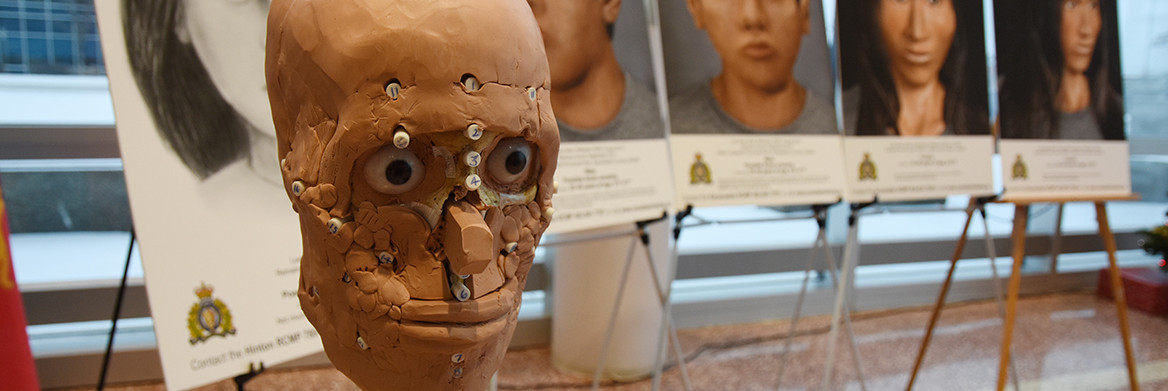Police in Alberta are hoping the public can help them connect faces with names. They're using forensic facial reconstruction to update three cases of unidentified human remains.
RCMP Cpl. Jean Nault, who created the reconstructions, says time is the enemy in the cases dating back to 1985.
"We're hoping the right person sees a reconstruction and has a spark of recognition," he says. "Then they can contact us and the science will take over."
Nault worked with Pamela Mayne Correia, an anthropologist with the University of Alberta, who studied the remains to help inform Nault's work.
Mayne Correia reviewed the remains for details about age, sex, stature and ancestry, which she estimates based on bone structure. "We try to give some suggestions to help direct the case," says Mayne Correia. "We can't say someone's exact ancestry, but we can suggest that there are some characteristics they share with a population."
Nault then incorporates the details into the reconstructions by creating drawings or sculpting three-dimensional models using clay.
"You have some basic information from the case and, from there, build a face that's appropriate to what the anthropologist devised and the shape of the skull," he says.
The reconstructions provide a human element to the historical cases.
"You can't put a skull in front of people and ask if they recognize the person," says Mayne Correia.
The three cases being updated include a possible Indigenous woman between 16 and 30 years old, whose remains were found in 1985 in Hinton, Alta., a possible Asian man between 25 and 40 years, found in 2013 in Peter Lougheed Provincial Park, and another woman between 23 and 40 years, found in 1995 near Carbon, Alta.
For Nault, the ultimate goal is to help families find answers about their missing loved one.
"I don't think those with a missing family member ever stop looking for their face in a crowd," he says.
While an intricate tool, forensic facial reconstruction produces results. Last summer, RCMP discovered remains in Slave Lake, Alta., and created a facial reconstruction. A municipal police officer recognized it as a missing person and started a homicide investigation.
DNA detection
If there's a visual confirmation based on a reconstruction, police can use dental records, DNA and other techniques to confirm identity.
The RCMP maintains the National Missing Persons DNA program, which can help police in cases of unidentified remains.
The Missing Persons Index and the Relatives of Missing Persons Index are valuable tools in the cases. If someone is missing, DNA can be collected from personal items, such as a toothbrush or razor, and family members can submit their DNA. Police compare these samples with the Human Remains Index.
"DNA is the best way we've found to identify someone," says Cst. Gillian Dunn, an investigator with the Alberta RCMP's Missing Persons and Unidentified Remains Unit.
Dunn says the facial reconstructions help raise awareness for missing persons cases and remind the public of DNA's value.
Since the reconstructions were revealed, the RCMP have received some tips but have yet to identify the remains. Numerous people with missing relatives have also come forward to provide DNA samples, which may help with identifications in the future.
In Alberta, there are more than 400 long-term missing persons cases and about 50 files of unidentified remains.
